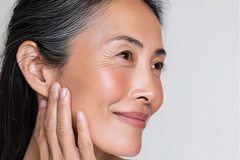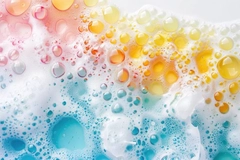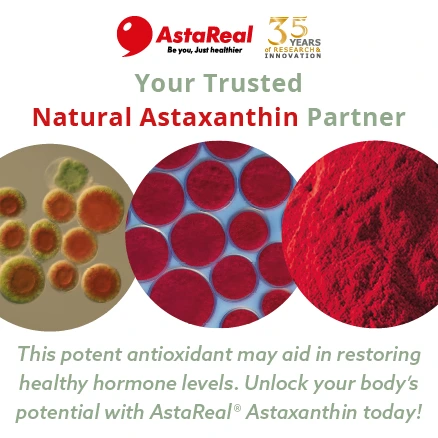Anti-aging boosters: Agave roots, galangal rhizome and medicinal bulb extract emerge
16 Jul 2024 --- In search of anti-aging boosters, Personal Care Insights unearths cosmetic applications for discarded agave roots, galangal aromatic rhizomes and the bulb of the flowering plant Eleutherine bulbosa Studies exploring these uses are published in Cosmetics.
Meanwhile, market researcher Innova Market Insights’ data indicates that 33% of consumers globally consider anti-aging as the most important functional skin care feature. This has led to a 5% global market growth in product launches featuring anti-aging claims from 2019 to 2023. Notably, oils have been at the forefront of innovation in this sector, achieving an 8% growth over the same period.
Researchers explain, “Skin aging is a complex biological process influenced by the combination of intrinsic factors (genetics and hormones) and extrinsic factors (radiation and pollution). Both sets of factors can stimulate skin cells to generate reactive oxygen species (ROS), exerting detrimental effects on cell functions such as collagen and elastin synthesis and pigmentation.”
“During skin aging, an imbalance occurs between ROS and the antioxidant reserve, referred to as oxidative stress. These unstable ROS readily react with lipids, proteins and genetic materials within skin cells, triggering the activation of activator protein-1 along with the upregulation of collagen-degrading enzymes like matrix metalloproteinases, collagenase and elastase. With the inhibition of collagen and elastin synthesis, and the simultaneous enhancement of degradation, the depletion of collagen and elastin content becomes evident, leading to wrinkle formation.”
 The cream gel formulated with sisal root extract shows comparable UV protection to synthetic sunscreens with antioxidants.Upcycling sisal for skin use
The cream gel formulated with sisal root extract shows comparable UV protection to synthetic sunscreens with antioxidants.Upcycling sisal for skin use
Researchers developed a new phytocosmetic product using discarded Agave sisalana Perrine roots, commonly known as sisal. The product offers antioxidant, anti-aging and photoprotective benefits. According to researchers, the roots are often left on the field, contributing to soil degradation.
“This accumulation of organic material at the production site can reduce soil oxygenation and disrupt the balance of microorganisms present, ultimately damaging sisal production,” the paper reads.
“Brazil is currently the world’s largest producer of sisal, with an average annual production of approximately 140 thousand tons of its hard fiber.”
The study incorporated a hydroethanolic extract (HER) from sisal roots into a cream-gel formulation.
Researchers identified flavonoids, including catechin, kaempferol, isorhamnetin and chrysin. The paper suggests that these compounds are known for their antioxidant properties, which can mitigate skin damage caused by ROS.
“Flavonoids are natural phenolic compounds found in plant roots. Due to their proven potential antioxidant activity, these compounds contribute greatly to photoprotection and anti-aging for the skin,” it adds.
They tested the cream-gel formulation to verify the extract’s effectiveness and safety. The extract’s safety for topical application was confirmed by the MTT assay, which evaluated its cytotoxicity and showed that it maintained cell viability above 70%. Additionally, the extract and the cream gel’s antioxidant and antiglycation activities were found to be significant.
Moreover, the cream gel’s photoprotective properties were compared with synthetic UVB and UVA sunscreens. The results showed that the HER-enriched cream gel offered comparable UV protection. The stability tests confirmed that the product is stable and does not irritate the skin.
 Eleutherine bulbosa extract shows promise as a natural antioxidant in cosmetics (Image credit: Cosmetics Journal).Antioxidants for anti-aging
Eleutherine bulbosa extract shows promise as a natural antioxidant in cosmetics (Image credit: Cosmetics Journal).Antioxidants for anti-aging
A separate study highlights the Eleutherine bulbosa extract’s potential as an effective antioxidant in cosmetic formulations. “The inhibition of elastase and collagenase of E. bulbosa bulbs may be, therefore, related with its phenolics and flavonoids content, which indicate its use as an antioxidant in anti-wrinkle cosmetics,” it posits.
“Application of E. bulbosa bulbs as an antioxidative agent in cosmetics has never been studied before.”
Researchers used water, ethanol (EtOH) and propylene glycol (PG) as extraction solvents — “considered mild and environmentally friendly solvents for the extraction process.” The combination of EtOH and PG yielded the highest bioactive compounds and antioxidative properties, surpassing individual solvents.
According to the findings, the EtOH and PG extract had significant anti-elastase and anti-collagenase activities. These enzymes cause skin aging by breaking down elastin and collagen. The extract’s non-cytotoxic effect on human dermal fibroblasts confirmed its efficacy.
The researchers tested an emulsion cream containing 2% E. bulbosa bulb extract. After one month of stability testing under various conditions, the cream retained its texture, pH and antioxidant properties. However, direct sunlight and high temperatures caused minor color changes and decreased antioxidative activity, respectively.
The findings suggest that E. bulbosa extract can be a stable and effective ingredient in skin care products, particularly anti-aging formulations. Its non-toxic nature further supports its safety for cosmetic use.
 Kaempferia galanga Linn. ethanol extracts demonstrated significant anti-collagenase and anti-elastase activities (Image credit: Cosmetics Journal).Ginger-powered cosmeceuticals
Kaempferia galanga Linn. ethanol extracts demonstrated significant anti-collagenase and anti-elastase activities (Image credit: Cosmetics Journal).Ginger-powered cosmeceuticals
Other research on Kaempferia galanga Linn. (KG), a plant native to India and commonly found in China, Indonesia and Thailand, has uncovered its promising anti-aging properties.
The study “Exploring the In Vitro Antioxidant, Anti-Aging and Cytotoxic Properties of Kaempferia galanga Linn. Rhizome Extracts for Cosmeceutical Formulations,” reveals that KG extracts, particularly those obtained with ethanol, show significant antioxidant and anti-aging effects, making them suitable for cosmeceutical applications.
The researchers tested KG rhizome extracts with various solvents, including deionized water, absolute ethanol, ethyl acetate and hexane. Absolute ethanol extracts had the highest levels of flavonoids and phenolics, which are known antioxidants.
In assays, the extracts also showed the strongest antioxidant activity, with the highest inhibition rates for collagenase (71.83%) and elastase (66.35%), enzymes involved in skin aging.
In addition to their powerful antioxidant and anti-aging properties, ethanol extracts exhibited lower cytotoxicity on human dermal fibroblasts than other solvents, suggesting they are effective and safe for use in anti-aging cosmeceutical products.
By Venya Patel














